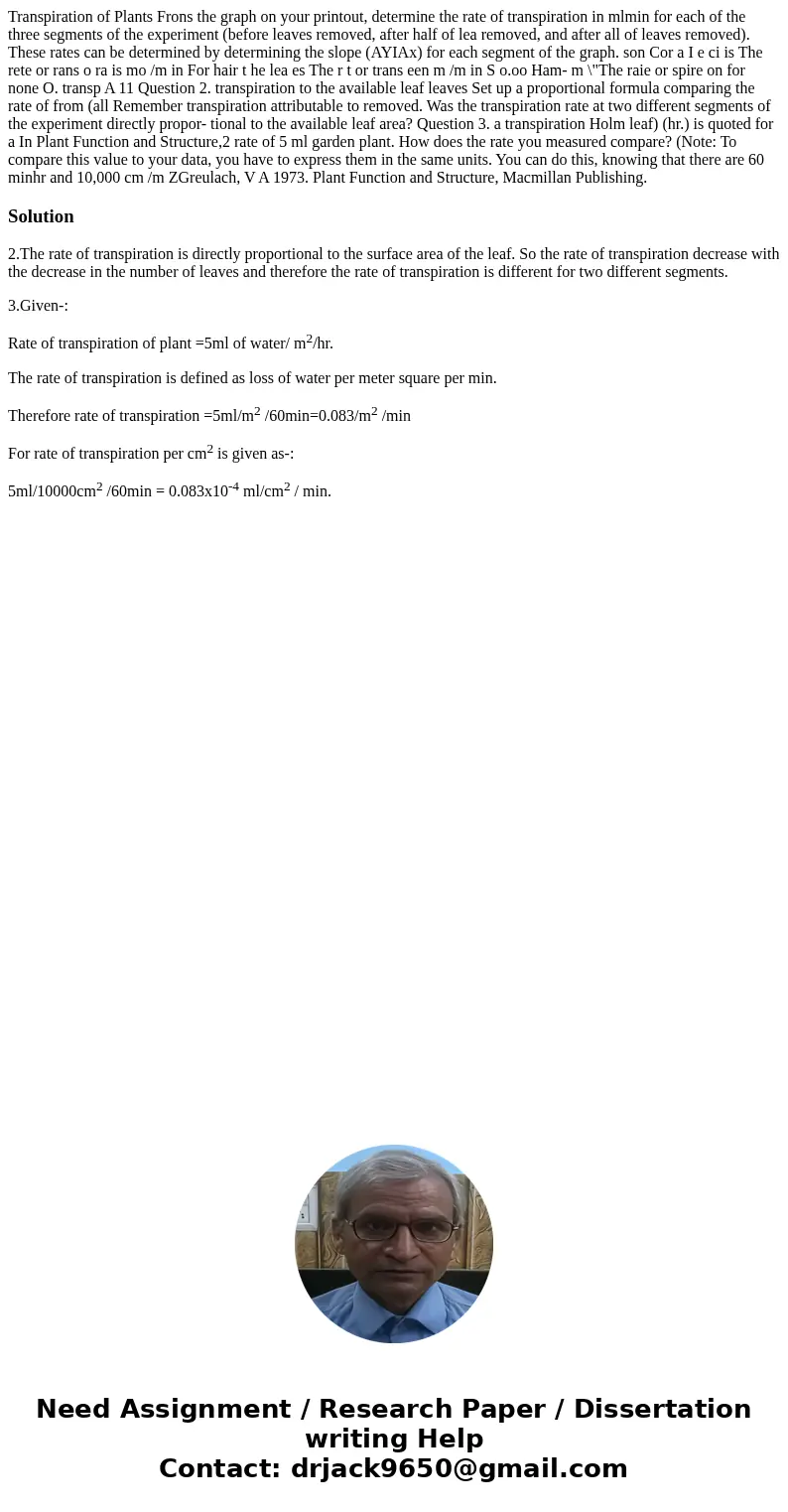Transpiration of Plants Frons the graph on your printout det
Transpiration of Plants Frons the graph on your printout, determine the rate of transpiration in mlmin for each of the three segments of the experiment (before leaves removed, after half of lea removed, and after all of leaves removed). These rates can be determined by determining the slope (AYIAx) for each segment of the graph. son Cor a I e ci is The rete or rans o ra is mo /m in For hair t he lea es The r t or trans een m /m in S o.oo Ham- m \"The raie or spire on for none O. transp A 11 Question 2. transpiration to the available leaf leaves Set up a proportional formula comparing the rate of from (all Remember transpiration attributable to removed. Was the transpiration rate at two different segments of the experiment directly propor- tional to the available leaf area? Question 3. a transpiration Holm leaf) (hr.) is quoted for a In Plant Function and Structure,2 rate of 5 ml garden plant. How does the rate you measured compare? (Note: To compare this value to your data, you have to express them in the same units. You can do this, knowing that there are 60 minhr and 10,000 cm /m ZGreulach, V A 1973. Plant Function and Structure, Macmillan Publishing. 
Solution
2.The rate of transpiration is directly proportional to the surface area of the leaf. So the rate of transpiration decrease with the decrease in the number of leaves and therefore the rate of transpiration is different for two different segments.
3.Given-:
Rate of transpiration of plant =5ml of water/ m2/hr.
The rate of transpiration is defined as loss of water per meter square per min.
Therefore rate of transpiration =5ml/m2 /60min=0.083/m2 /min
For rate of transpiration per cm2 is given as-:
5ml/10000cm2 /60min = 0.083x10-4 ml/cm2 / min.

 Homework Sourse
Homework Sourse